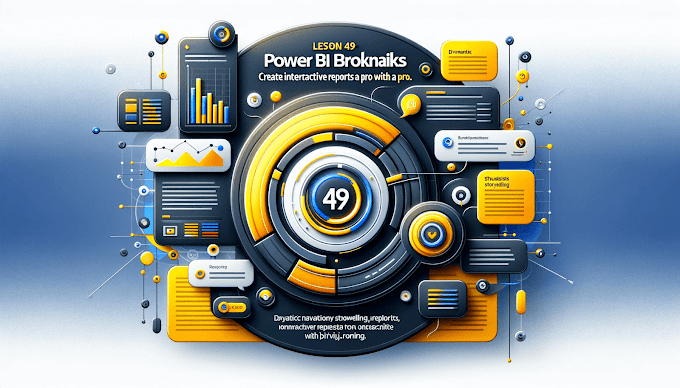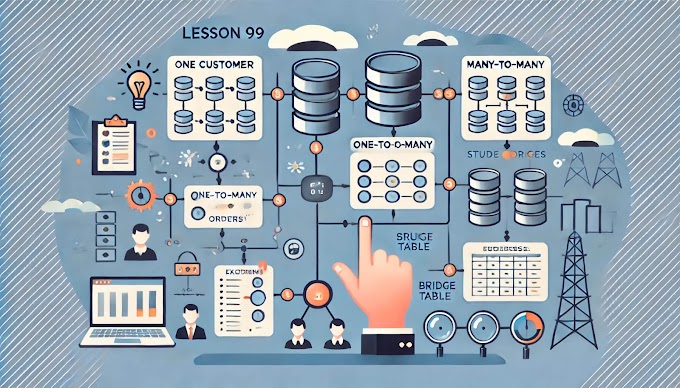Excel's power goes beyond advanced tips and tricks—it includes features that enable deeper integration, advanced analysis, and automation. Here's how you can make the most of Excel as an expert use
1. Integrating Excel with Other Tools
Why It’s Important: Streamline workflows by connecting Excel with tools like Power BI, databases, and online services.
Examples:
Power BI Integration: Import Excel data for interactive dashboards.
Database Connection: Use "Data > Get Data" to pull live data from SQL or Access.
Microsoft Flow/Power Automate: Automate file transfers or updates to/from Excel.
2. Advanced Scripting with VBA
What It Does: Visual Basic for Applications (VBA) enables complex automation.
Key Concepts:
Use Workbook_Open events for actions when a file opens.
Automate tasks like sending emails using Outlook.Application.
Create user forms for custom input.
Pro Tip: Start small—record macros and inspect the VBA code to learn the syntax.
3. Building Interactive Dashboards
Why Use Dashboards: Present data visually and interactively.
How to Start:
Use Pivot Charts combined with slicers for filtering.
Incorporate sparklines for trend analysis within cells.
Use Form Controls to create buttons, sliders, or dropdowns for interactivity.
4. Mastering DAX in Power Pivot
What is DAX: Data Analysis Expressions (DAX) are formulas for advanced data modeling.
Key DAX Functions:
CALCULATE: Modify filters for dynamic calculations.
SUMX: Perform calculations row by row.
RELATED: Retrieve data from linked tables.
Example: Create a dynamic year-over-year growth metric.
5. Working with Big Data in Excel
Challenges: Excel struggles with massive datasets.
Solutions:
Power Query: Efficiently clean and transform large datasets.
CSV/Database Links: Use external references to manage large files.
Power Pivot: Handle millions of rows with compression.
6. Using Add-Ins for Extended Capabilities
Examples:
Solver: Solve optimization problems with constraints.
Analysis ToolPak: Perform complex statistical analyses.
Custom Add-Ins: Explore third-party tools for niche needs.
7. Real-Time Collaboration with Excel Online
Benefits: Collaborate in real time without version conflicts.
Best Practices:
Use OneDrive or SharePoint for shared files.
Track changes using version history.
Protect specific cells or sheets to maintain data integrity.
8. Exploring Excel's AI-Powered Features
Why AI in Excel: Leverage artificial intelligence to analyze data and generate insights quickly.
Features to Explore:
Ideas: Automatically generate trends, summaries, and recommendations from your data.
Data Types: Enrich cells with linked information about stocks, geography, and more.
Forecast Sheets: Predict future trends based on historical data.
Example: Use the "Ideas" tool to identify patterns and outliers in sales data.
9. Mastering Form Controls for Interactivity
What They Add: Bring your spreadsheets to life with buttons, checkboxes, and dropdowns.
How to Use:
Go to the Developer tab.
Insert a form control like a combo box or button.
Link the control to a cell or macro for dynamic functionality.
Example: Use a button to run a macro that updates your dashboard in one click.
10. Enhanced Data Analysis with Advanced Charts
Why Advanced Charts: Go beyond basic visuals to convey more nuanced insights.
Examples:
Waterfall Chart: Show cumulative effects of values.
Sunburst Chart: Represent hierarchical data.
Histogram: Analyze frequency distribution.
Pro Tip: Combine charts with slicers for interactive filtering.
Excel continues to evolve, offering tools that combine traditional spreadsheet power with cutting-edge technology. Whether you're automating workflows or diving deep into data analytics, there's always more to learn. Push your boundaries and explore these features to become an Excel powerhouse
Write Us- Support@virvijay.com.












%20Best%20Practices%20%E2%80%93%202025%20Guide'%20illustrating%20secure%20and%20controlled%20data%20acce.jpg)




